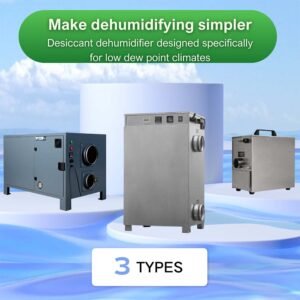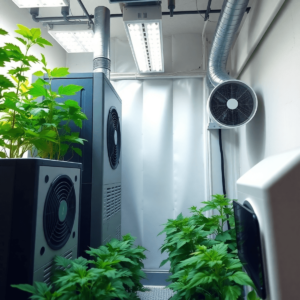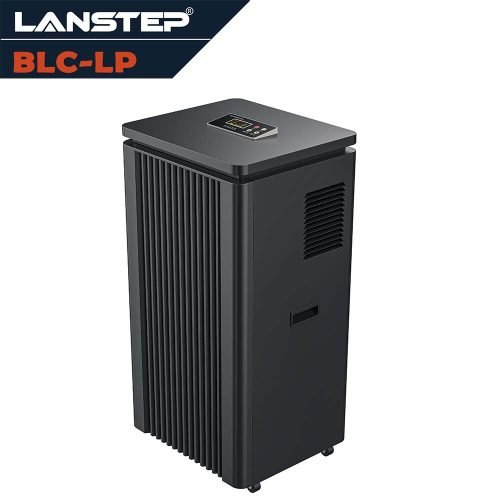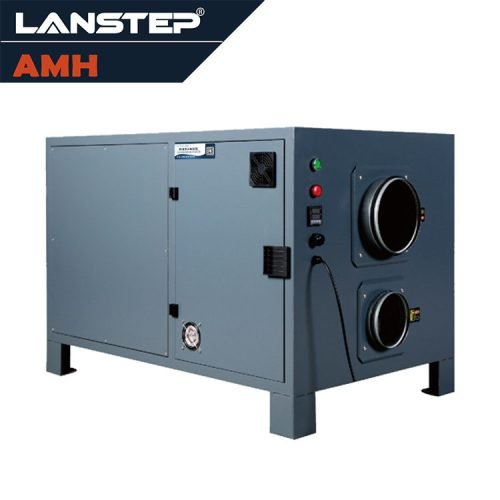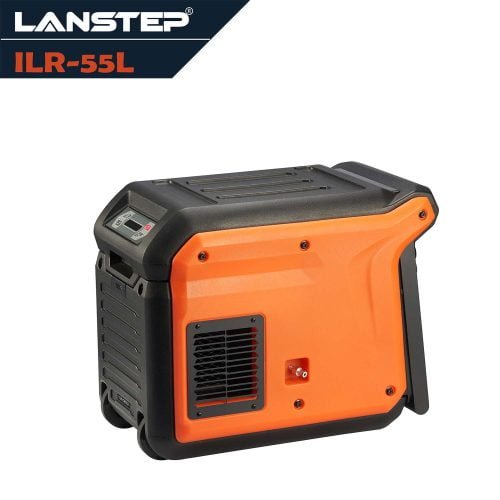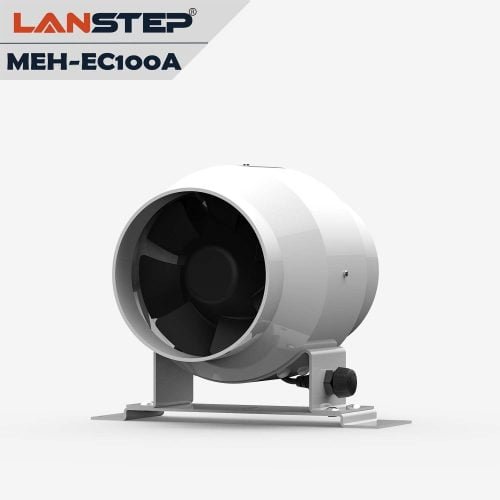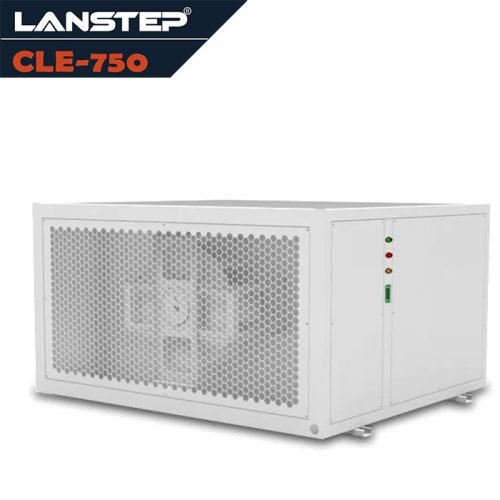Introduction
In the ever-changing world of growing cannabis, it’s important to understand how different environmental conditions affect plant health and crop yields. One key concept that comes into play here is Vapor Pressure Deficit (VPD). VPD measures the difference between the amount of moisture in the air and its maximum capacity at a specific temperature. This measurement has a direct impact on how plants lose water through transpiration and how efficiently they take up water and nutrients.
By adjusting VPD levels, growers can create optimal conditions for cannabis growth, resulting in stronger plants and higher yields.
LANSTEP is a company that specializes in improving cultivation efficiency, and they are making a significant contribution to this field. Their innovative dehumidification solutions are designed to optimize humidity control, which is crucial for maintaining ideal VPD levels during different stages of plant growth.
With LANSTEP’s cutting-edge approach:
- Energy-efficient systems support sustainable cultivation.
- Advanced technologies ensure precise humidity management.
- Cultivation strategies are enhanced without compromising energy use.
By adopting these advanced techniques, growers can go beyond traditional methods and embrace a future where carefully controlled environments lead to success in cannabis cultivation.
Understanding Vapor Pressure Deficit (VPD) and Its Impact on Cannabis Growth
Vapor Pressure Deficit (VPD) is a crucial concept in plant cultivation, especially when it comes to growing cannabis. It measures the difference between the actual moisture content in the air and the maximum moisture content the air can hold at a specific temperature. This simple yet powerful idea greatly affects how plants transpire, absorb water, and take in nutrients.
Role of VPD in Plant Transpiration Processes
Transpiration is the process by which plants absorb water through roots and then release water vapor through pores in their leaves. VPD plays a significant role in this process:
- Optimal Water Uptake: When VPD levels are within an ideal range, plants can efficiently absorb water, ensuring that nutrients dissolved in this water are effectively transported to different parts of the plant.
- Nutrient Absorption: Proper VPD levels facilitate better nutrient uptake, leading to robust plant health and enhanced growth outcomes.
The importance of maintaining appropriate humidity levels for cannabis cannot be overstated. If VPD is too low, the environment becomes overly humid, which may inhibit transpiration and cause nutrient deficiencies. Conversely, excessively high VPD signals low humidity, prompting excessive transpiration and potential dehydration stress.
Implications on Plant Health and Disease Resistance
Cannabis plants subjected to improper VPD conditions often exhibit compromised health:
- Stress Responses: High or low VPD can trigger stress responses in plants, potentially stunting growth or increasing vulnerability to pests.
- Disease Susceptibility: Conditions such as mold and mildew thrive under incorrect humidity levels. Maintaining an optimal VPD safeguards against these threats by fostering an environment less conducive to pathogen proliferation.
Calculating VPD: The Interplay of Temperature and Relative Humidity
To effectively utilize VPD for cannabis cultivation, it is important to understand how it is calculated and the intricate relationship between key environmental factors:
- Temperature Dynamics:
- Warmer air holds more moisture than cooler air
- For every 20°F increase in temperature, air’s moisture-holding capacity roughly doubles
- Leaf surface temperature typically runs 2-4°F cooler than ambient air
- Relative Humidity Considerations:
- Represents current moisture as a percentage of maximum capacity
- Fluctuates throughout the day based on temperature changes
- Optimal ranges vary between 40-70% depending on growth stage
Understanding VPD Calculations
The standard formula for calculating VPD is:
VPD = SVP × (1 – RH/100)
Where:
- SVP = Saturated Vapor Pressure
- RH = Relative Humidity (%)
Key Measurement Tools:
- Digital psychrometers
- Infrared thermometers
- Environmental controllers
- VPD charts and calculators
Environmental Control Strategies
Maintaining precise VPD levels requires careful manipulation of these variables:
- Air Movement:
- Proper circulation ensures uniform temperature distribution
- Helps prevent microclimates that can skew VPD readings
- HVAC Systems:
- Integrated temperature and humidity control
- Automated adjustments based on real-time measurements
By mastering these technical aspects, growers can create ideal growing conditions that promote optimal transpiration rates and nutrient uptake, ultimately leading to healthier plants and improved yields.
Optimizing VPD for Different Growth Stages of Cannabis Plants
Achieving the optimal Vapor Pressure Deficit (VPD) is crucial in guiding cannabis plants through their distinct growth stages. Each phase—namely, the vegetative stage and the flowering stage—demands precise environmental conditions to ensure robust development and maximize yield potential.
 Vegetative Stage: Building the Foundation
Vegetative Stage: Building the Foundation
During this initial phase, maintaining an ideal VPD range of 0.8 to 1.2 kPa is highly beneficial. This specific range fosters healthy leaf development and supports vigorous plant growth by promoting efficient water uptake and nutrient absorption. The vegetative stage is characterized by rapid cell division and expansion, necessitating optimal transpiration rates to facilitate these processes.
- Key Benefits:Promotes sturdy stem and leaf formation.
- Enhances root system development, crucial for nutrient uptake.
- Encourages resilience against environmental stressors.
The importance of adhering to these VPD values cannot be overstated; they set the foundation for a plant’s overall health and its ability to thrive in subsequent stages.
Flowering Stage: Maximizing Yield and Quality
As cannabis plants transition into the flowering stage, altering the VPD to a slightly higher range of 1.2 to 1.6 kPa becomes essential. This adjustment not only catalyzes resin production—a key factor in enhancing cannabinoid concentration—but also mitigates risks associated with mold and mildew, common challenges during this critical phase.
- Key Outcomes:Increases in trichome production, contributing to higher potency.
- Reduction in humidity-related pathogens.
- Improved flower density and quality.
By fine-tuning VPD levels according to these stages, cultivators can optimize plant health while unlocking the full genetic potential of their crop.
Tailoring VPD for Maximum Results
The nuanced requirements between the vegetative and flowering stages highlight the need for dynamic environmental management strategies. Industry research consistently endorses specific VPD values:
- Vegetative Stage: 0.8–1.1 kPa
- Flowering Stage: 1.0–1.5 kPa
These recommendations serve as guidelines for growers aiming to sustain plant vitality throughout the entire cultivation cycle.
The Pathway to Consistent Yields
Maintaining optimal VPD across all phases of growth ensures not only healthier plants but also maximized yields. By strategically managing environmental conditions tailored to each stage, cultivators can achieve consistency in production quality and quantity, setting a benchmark for successful cannabis cultivation practices.
Understanding these principles allows us to approach cannabis cultivation with a heightened sense of precision and foresight, paving the way for innovation in agricultural techniques that are both sustainable and effective.
Challenges with Fixed Humidity Targets in Cannabis Cultivation Environments
In the world of cannabis cultivation, achieving optimal plant health and yield is often hindered by the limitations of Fixed Humidity Targets. These predetermined humidity levels, although seemingly simple, struggle to meet the specific requirements of cannabis plants during different growth stages and under varying environmental conditions.
 Understanding Fixed Humidity Targets in Cannabis Cultivation
Understanding Fixed Humidity Targets in Cannabis Cultivation
Fixed humidity targets represent a traditional cultivation approach where growers maintain consistent moisture levels throughout the growing cycle. This method gained popularity due to its straightforward implementation and minimal equipment requirements.
Key characteristics of fixed humidity targets include:
- Predetermined moisture levels that remain constant
- Single-setting environmental controls
- Simplified monitoring protocols
- Basic humidity control equipment usage
While this approach offers certain advantages like:
- Reduced equipment complexity
- Lower initial setup costs
- Easier staff training requirements
- Simplified maintenance procedures
The fundamental flaw in this methodology lies in its rigid nature. Cannabis plants undergo significant physiological changes during their lifecycle, each requiring distinct environmental conditions for optimal growth. This “one-size-fits-all” approach fails to account for:
“Plants are dynamic organisms with evolving needs – treating them with static conditions contradicts their natural growth patterns.”
Consider these critical factors:
- Metabolic variations during different growth phases
- Nutrient uptake efficiency changes throughout the lifecycle
- Transpiration rate fluctuations based on plant size
- Root development requirements at various stages
The simplicity of fixed humidity targets often comes at the cost of compromised plant development, potentially affecting both quality and yield outcomes in commercial cannabis operations.
Limitations of Static Humidity Levels
- Inflexibility Across Growth Stages: Cannabis plants have distinct physiological demands at different stages—from vegetative growth to flowering. Static humidity levels may not accommodate these variations, leading to suboptimal conditions that hinder growth.
- Environmental Variability: Changes in external climate conditions or internal environments due to lighting and other factors can make fixed targets inadequate. An inability to adjust quickly can worsen stress on the plants.
- Strain on Environmental Control Systems: Maintaining unchanging humidity levels often requires environmental control systems to operate continuously at high capacity. This constant demand can increase energy consumption significantly and risk potential system failures, impacting both economic and operational efficiency.
Dynamic Humidity Management: VPD vs. Fixed Humidity
Understanding VPD as a Dynamic Solution
Introducing the concept of Vapor Pressure Deficit (VPD) presents a dynamic alternative to static methods. Unlike fixed humidity targets, VPD management actively adapts to changing environmental conditions and plant needs by considering both temperature and relative humidity in real-time. This scientific approach provides growers with a more sophisticated tool for environmental control.
Key Benefits of VPD Implementation
- Enhanced Yield and Quality:
- Optimizes nutrient uptake through improved transpiration rates
- Maintains ideal leaf surface conditions for gas exchange
- Supports consistent terpene development during flowering
- Facilitates proper calcium and nutrient movement through the plant
- Disease Prevention and Plant Health:
- Creates unfavorable conditions for pathogen development
- Reduces condensation risks on plant surfaces
- Maintains proper air circulation patterns
- Strengthens natural plant defense mechanisms
Advanced Environmental Control
- Real-Time Adaptability:
- Automatically adjusts to daily temperature fluctuations
- Responds to changes in plant size and density
- Compensates for varying light intensities
- Maintains optimal pressure gradients throughout the canopy
- Resource Optimization:
- Reduces unnecessary dehumidification cycles
- Minimizes energy waste from overcorrection
- Improves water use efficiency
- Enables precise climate zone management
Embracing a Dynamic Approach
The limitations of relying solely on fixed humidity targets highlight the need for a more flexible strategy—one that effectively incorporates VPD management. By doing so, cultivators empower their operations with increased resilience against environmental fluctuations and improved resource efficiency.
This proactive approach not only optimizes plant health but also creates an environment conducive to innovation and sustainability within the ever-changing world of cannabis cultivation.
Comparing the Benefits and Drawbacks: VPD Management vs. Fixed Humidity Control Techniques
When it comes to growing cannabis, it’s crucial to understand the differences between VPD management and fixed humidity control. These two methods represent different ways of controlling the environment in which plants grow, and each has its own effects on plant health and energy usage.
Key Differences
1. VPD Management
This method actively adjusts both temperature and humidity to maintain an ideal Vapor Pressure Deficit (VPD). By focusing on the VPD, growers can fine-tune the environment to meet specific plant needs at various stages of growth. This approach allows for precise control over transpiration rates, ensuring efficient nutrient uptake and minimizing stress on plants.
2. Fixed Humidity Control
In contrast, fixed humidity control simply maintains a constant level of humidity without taking into account temperature changes or different growth phases. While this method is easier to implement, it often fails to address the specific requirements of cannabis plants throughout their life cycle.
Advantages of Dynamic VPD Management
- Enhanced Disease Prevention: By keeping VPD levels within the optimal range, growers can reduce the risk of diseases like mold and mildew that thrive in less-than-ideal humidity conditions.
- Improved Energy Efficiency: With dynamic management, environmental parameters are adjusted as needed, preventing unnecessary use of heating or cooling systems. This flexibility can lead to significant energy savings compared to fixed methods.
- Optimized Growth Conditions: For those wondering how to lower VPD in a grow tent, active modulation allows for immediate adjustments in response to changes in the environment, ensuring plants stay within their ideal growth range.
Considerations
While fixed humidity control may be simpler and require less frequent monitoring, it often results in higher energy consumption and less-than-optimal plant health. On the other hand, VPD management demands more advanced systems and knowledge but rewards growers with healthier plants and lower operational costs.
As we continue exploring effective cultivation strategies, understanding these differences highlights the potential benefits of adopting dynamic environmental controls that cater to cannabis plants’ changing needs.
Practical Strategies for Effective VPD Management in Cannabis Cultivation with LANSTEP’s Solutions
The journey towards optimizing cannabis cultivation requires a careful approach to managing Vapor Pressure Deficit (VPD). This involves using a combination of strategies that involve advanced technology and a deep understanding of the environment. With the right tools and systems in place, growers can find the perfect balance needed for healthy plants and high yields.
Strategies for Optimal VPD Management
1. Advanced HVAC Systems
Incorporating sophisticated Heating, Ventilation, and Air Conditioning (HVAC) systems is paramount. These systems facilitate precise control over temperature and humidity levels, essential for maintaining the desired VPD range.
Programmable HVAC units allow growers to adjust conditions dynamically as plants transition through different growth stages.
2. Environmental Control Systems
Employing integrated environmental control systems ensures seamless regulation of climate variables.
These systems often include sensors that monitor real-time data on temperature and humidity, enabling proactive adjustments to maintain optimal conditions.
3. Monitoring Tools
Utilizing psychrometric charts or data loggers provides accurate tracking of environmental parameters.
These tools help in visualizing the relationship between temperature, humidity, and VPD, offering insights necessary for fine-tuning the growing environment.
Role of LANSTEP’s Innovative Dehumidification Technologies
The quest for efficient moisture regulation is further enhanced by LANSTEP’s pioneering dehumidification solutions. Their technologies are designed to support cannabis cultivation through both growth and drying phases without compromising energy efficiency:
- Low-Temperature Dehumidification: Engineered to perform optimally even at lower temperatures around 20°C, these systems widen the dew point range, providing flexibility in managing humidity levels effectively across various conditions.
- TPER Technology: This comprehensive solution addresses both growth and drying needs by employing advanced dehumidification methods that ensure consistent moisture control while minimizing energy consumption.
- Energy Efficiency: With an impressive efficiency of 9 pints per kWh, LANSTEP’s systems represent a significant investment in sustainable cannabis cultivation practices. The result is not only healthier plants but also substantial energy savings.
Adopting these best practices for VPD management creates an environment where cannabis plants can thrive. By leveraging advanced technologies like those offered by LANSTEP, cultivators can transform their operations into models of efficiency and sustainability.

Implementing Integrated Environmental Control Systems: A Comprehensive Guide for Cannabis Growers
To fully unlock the potential of cannabis cultivation, it’s crucial to have a carefully controlled environment. That’s where integrated environmental control systems come in. These systems play a vital role in creating the ideal conditions for plant growth and health. By carefully managing factors like Vapor Pressure Deficit (VPD) and fixed humidity levels, growers can establish a consistent atmosphere that promotes strong cannabis development.
For instance, maintaining optimal humidity levels is essential for cannabis growth. This is where high-efficiency dehumidifiers such as the CLE210 efficient grow room dehumidifier, which removes up to 210 pints of moisture per day, come into play. Such devices are designed exclusively for grow rooms and can significantly aid in achieving the desired environmental control.
Balancing VPD and Fixed Humidity Targets
It’s important to understand how VPD and static humidity levels interact with each other. VPD focuses on dynamic moisture regulation, while fixed humidity targets provide a baseline stability. The challenge lies in finding a way to bring these two approaches together in harmony, creating an environment that encourages both vigorous growth and disease prevention. With the help of advanced control systems, growers can make real-time adjustments to these parameters, ensuring optimal conditions throughout the entire cultivation process.
Key Components of Environmental Control Systems
An effective environmental control system consists of several key elements:
- Temperature Regulation: This is essential for maintaining the right heat levels that influence plant metabolism.
- Humidity Management: Proper moisture levels are crucial to prevent mold growth while promoting healthy transpiration.
- Airflow Dynamics: Uniform distribution of temperature and humidity is facilitated by proper airflow, which reduces microclimates within growing spaces.
These components work together synergistically to create the best possible growing conditions for cannabis plants, minimizing any stress factors they may encounter.
Steps to Setting Up an Effective Climate Control System
Here are the steps you need to follow in order to set up an effective climate control system:
- Assessment of Cultivation Space: Take a close look at the dimensions of your growing area, the quality of its insulation, and any existing infrastructure.
- Selection of Equipment: Choose HVAC units, dehumidifiers, and fans that are specifically designed to meet your unique environmental requirements.
- Integration of Sensors: Install sensors that can continuously monitor temperature, humidity, and VPD levels in real-time.
- System Configuration: Program your controllers so that they maintain the desired setpoints based on different stages of plant growth.
- Testing and Calibration: Conduct thorough tests to ensure that your system is accurate and reliable.
By following this structured approach, you’ll be able to seamlessly integrate temperature regulation with humidity management components.
Importance of Maintenance and Troubleshooting Protocols
In order to keep your system running efficiently and reliably over time, regular maintenance is absolutely essential:
- Calibration Checks: Make it a habit to regularly verify the accuracy of your sensors in order to prevent any drift from occurring over time.
- Routine Cleaning: Ensure that all components remain free from dust or debris that could impair their functionality.
- Troubleshooting Protocols: Develop clear guidelines for how you will address any issues promptly in order to minimize downtime.
By taking these proactive measures, you’ll be able safeguard against any declines in performance and ensure that optimal growth conditions are consistently maintained.
By embracing integrated environmental control systems, cannabis growers position themselves at the forefront of cultivation innovation—where precision meets productivity. This strategic approach not only maximizes yield but also enhances the resilience and quality of the final product.
Conclusion
In the ever-changing world of cannabis cultivation, it is essential to adopt dynamic moisture management techniques. These innovative methods allow growers to go beyond traditional practices, creating environments where plants can grow robustly and withstand challenges.
The Role of Technology
LANSTEP’s advanced dehumidifiers are leading this change. By precisely controlling humidity levels, these solutions not only improve cannabis growth strategies but also significantly reduce energy usage. The combination of technology and cultivation promotes a sustainable practice that benefits both the environment and the economy.
Understanding VPD vs. Fixed Humidity Targets
It is crucial to grasp the concept of Vapor Pressure Deficit (VPD) in comparison to fixed humidity targets in cannabis cultivation. While fixed targets offer a simple approach, VPD provides a more comprehensive framework that dynamically incorporates temperature changes and plant requirements. This deeper understanding enhances plant health, maximizes yield, and minimizes disease risks.
As we embrace technology-driven solutions, the future of cannabis cultivation becomes clearer—characterized by better growth conditions and reduced environmental impact. The journey towards sustainable cannabis cultivation involves not just adapting but thriving through innovation.

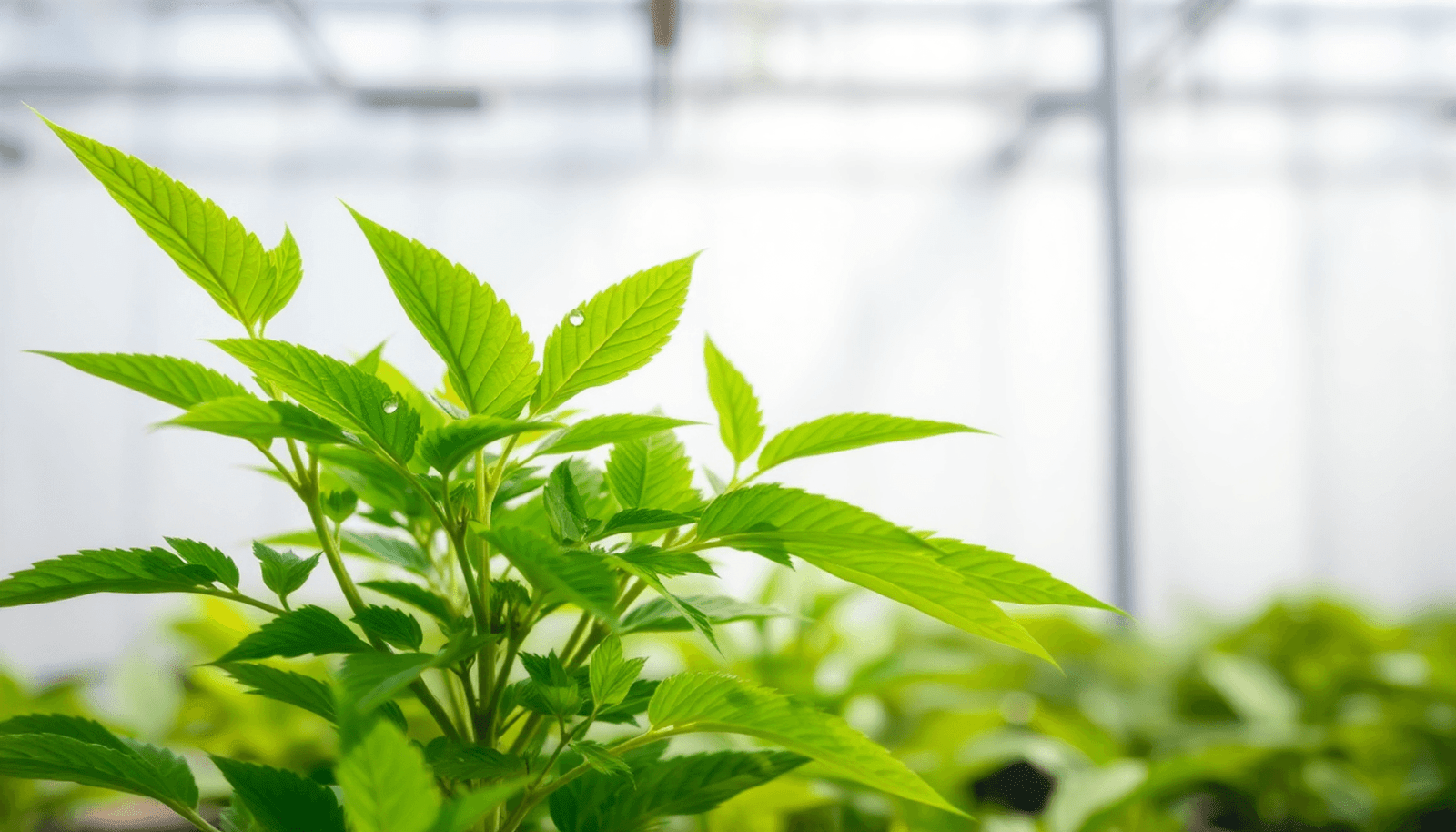 Vegetative Stage: Building the Foundation
Vegetative Stage: Building the Foundation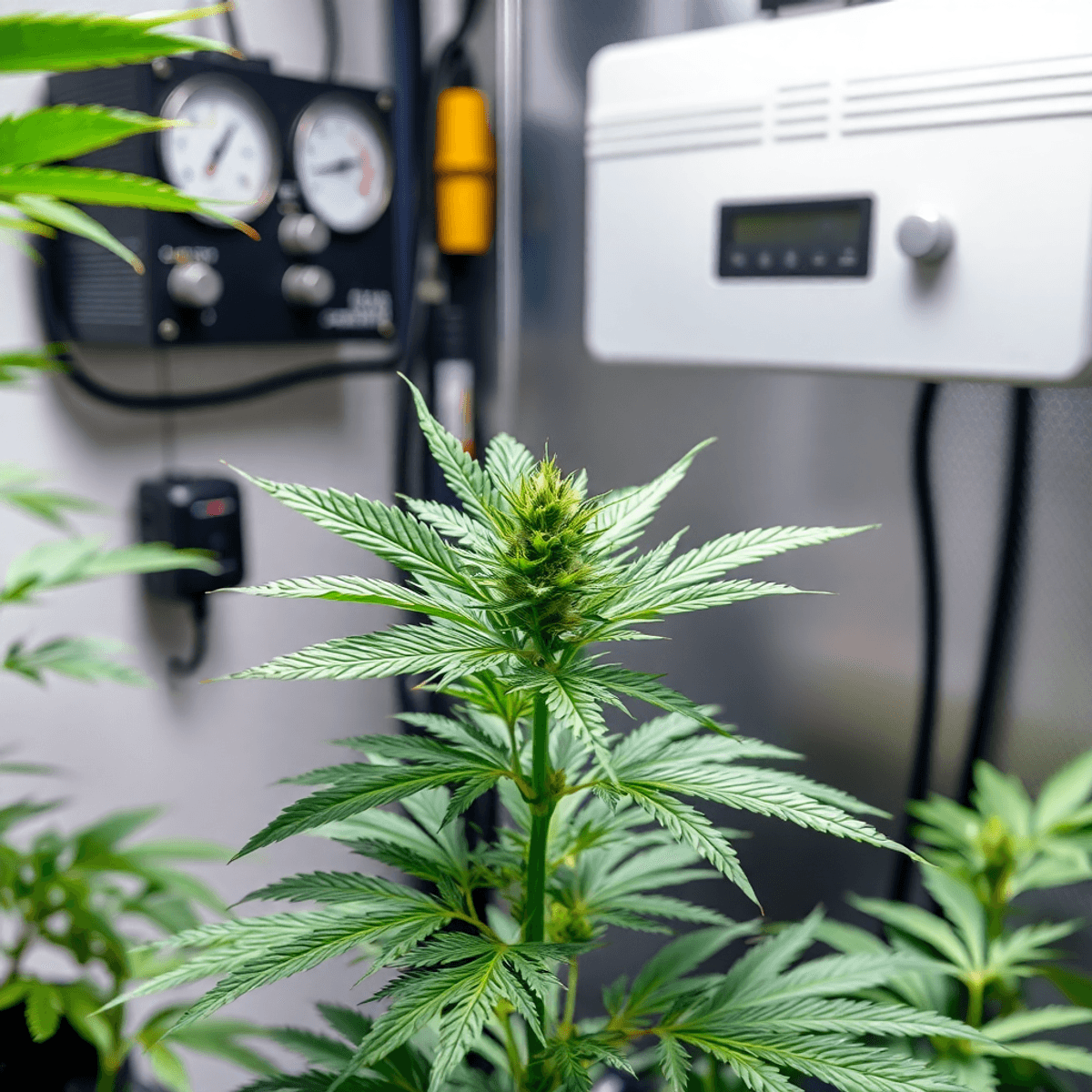 Understanding Fixed Humidity Targets in Cannabis Cultivation
Understanding Fixed Humidity Targets in Cannabis Cultivation
